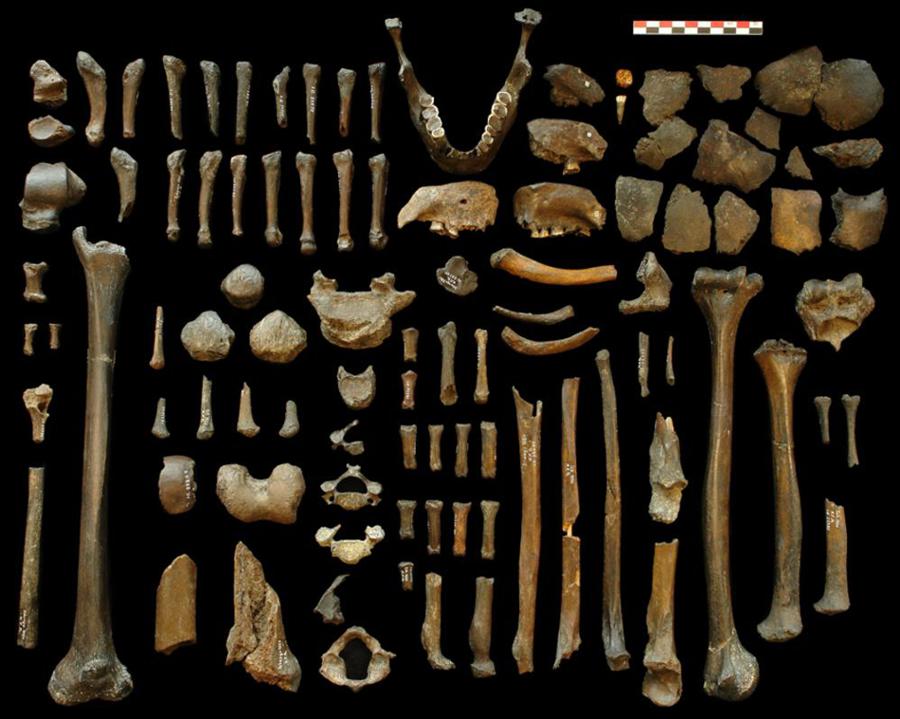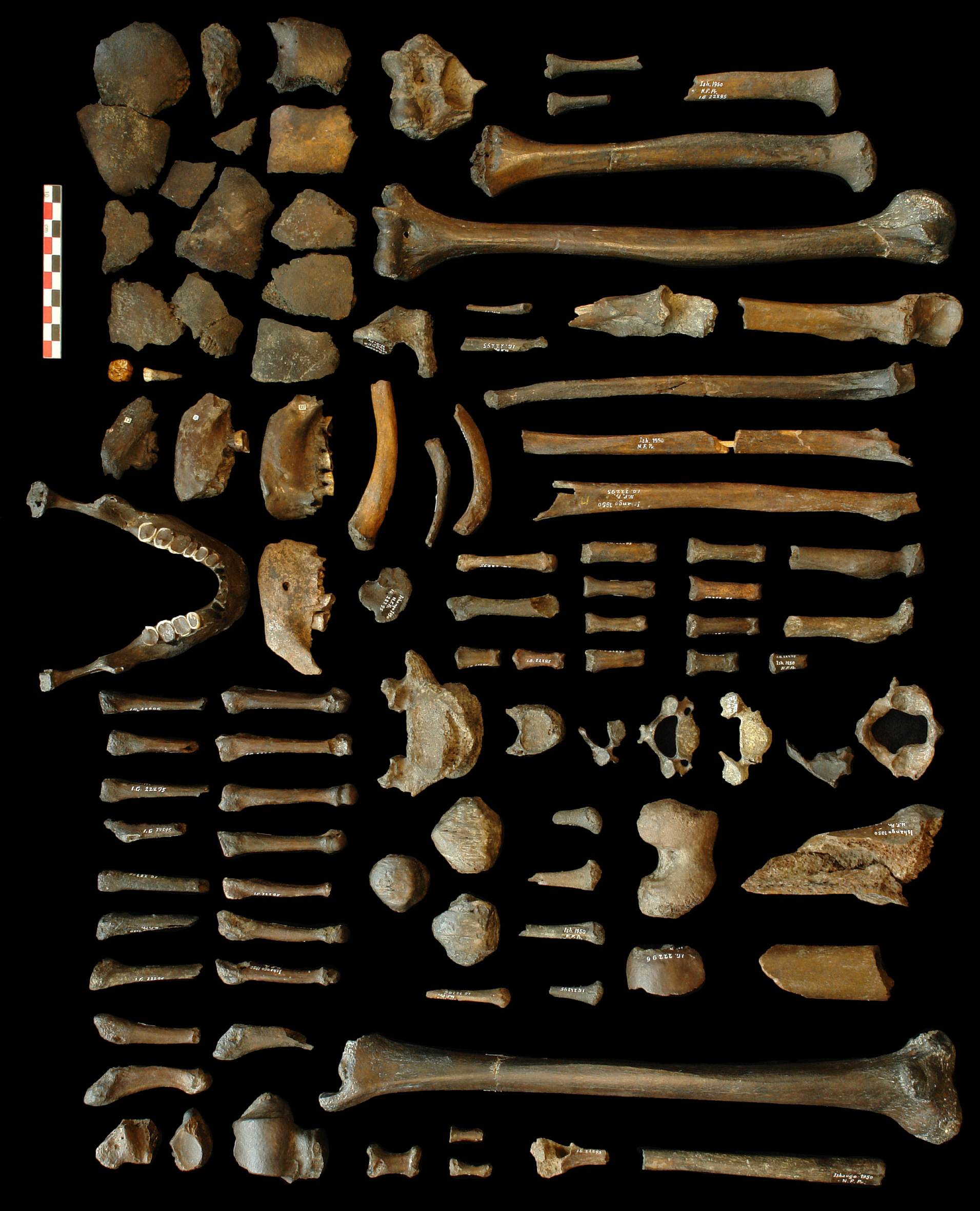
A hundred human bones were discovered dispersed throughout the site.
Which hominins did the bones belong to?
The bones belonged to Homo sapiens but had some archaic traits retained from
their ancestors. So far, there have been very few bones of Paleolithic Homo
sapiens found in the world. Those of Ishango are therefore of great scientific
value.
Were there lots of them?
The bones corresponded to a minimum of nine people. There were four adults,
a teenager, two children and two babies, which is of course just a small portion
of the Paleolithic population of Ishango.
Were they buried?
The bones are in good condition. They have not been transported for a long
distance by water or left there by predators. However, the excavations didn’t
reveal the existence of funerary pits. So the question remains open ...
